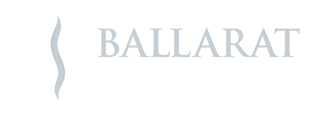help
The Gonstead Chiropractic Exam
The Gonstead examination procedure is a highly specific set of tasks aimed at specifically addressing a component of physiological change. Each step of the examination enables the Chiropractor to better identify the source of the problem.
Please hover over each box for more information, each one highlights the individual steps that the Gonstead Chiropractor takes in order to assess a patient.

Health History
A detailed interview about your problem.Health History
The Chiropractor will ask you a number of specific questions relating to your overall health and presenting complaint. This may involve collecting information regarding your daily activities and lifestyle that may impact on your health issues and presenting complaint. Overall, a thorough history will help to determine where problems exist, what perpetuates, aggravates and relieves your condition, and to determine your overall health status.
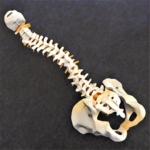
Visualistion
Lets take a look at your posture.Visualisation
The Chiropractor will observe your posture and spinal column for changes in curvature, symmetry and balance. Further postural assessment whilst standing, walking and sitting will help to highlight where problems exist.
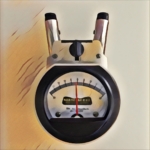
Instrumentation
Skin temperature?Instrumentation
The ‘Nervo-scope’ is a unique differential skin temperature instrument used by Gonstead Chiropractors to detects thermoelectric changes in the skin, caused by improper nerve control to the blood flow of the skin. This guides the Chiropractor in where to look for a problem in the spine.

Static Palpation
Feeling the spine for tightness, swelling, tenderness.Static Palpation
Static palpation is the method for feeling the spine and surrounding tissues for tightness, swelling and tenderness. A Chiropractic subluxation is a result of subtle injury to the ligaments that attach to the vertebral bones in the spine. The damage to the ligament produces inflammation. Your Chiropractor is trained to find such a problem.
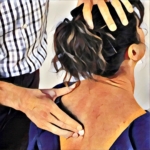
Motion Palpation
Feeling the spine for equal movement between joints.Motion Palpation
The Chiropractor will always check for movement at each level of the spine, performed in a seated (weight bearing) position. When doing so, each vertebral level is tested and compared to other levels for three different directions of normal motion in order to determine if there is a deficiency in any or all directions. Reduced movement between any two segments may help to identify a Chiropractic subluxation.
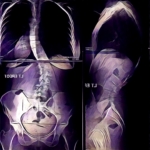
X-Ray Analysis
Specific X-Ray analysis procedures.X-Ray Analysis
Full spine specialised X-Rays may be required to effectively evaluate your presenting complaint. X-Rays provide valuable information about weight bearing posture loading, the health of your spine and its joints, any abnormalities present and any signs of pathology or disease. This information is vital for the Gonstead Chiropractor to safely, specifically and effectively analyse and manage your condition.

Special Tests
Getting any extra information needed.Special Tests
Chiropractors specialise in dealing with nervous system function using the spinal column as leverage to influence the nervous system, therefore it is of utmost importance for the Chiropractor to obtain as much information as possible. As a result, the Chiropractor may request additional orthopaedic, neurologic or other special tests in order obtain a better understanding of your condition.

Referral
Appropriately referring to other professionals when required.Referral
The Chiropractor may need to undertake further external testing in order to obtain more information about your condition; or your case may not be best suited to Chiropractic management; or your condition may require co-management with an appropriately qualified health professional. As such, the Chiropractor will arrange for a referral to be made to the most appropriate professional when required.
Gonstead Chiropractic Equipment

The Cervical Chair
The cervical (neck) chair is used to examine the patient with the nervoscope, palpate and adjust the cervical vertebrae in a special manner developed by Dr Gonstead. Research has shown that cervical artery flow is compromised with 45 degrees of rotation of the neck. This sitting adjustment does not rotate the neck more than 15 degrees and NO rotation occurs during the actual adjustment. Cervical adjustments can also be performed in other ways on the Hylo or Knee-Chest tables.

The Pelvic Bench
The pelvic bench is used to adjust the pelvis, the sacrum (tailbone) and the lumbar vertebrae. The pelvis side posture adjustment is also unique to the Gonstead Method.
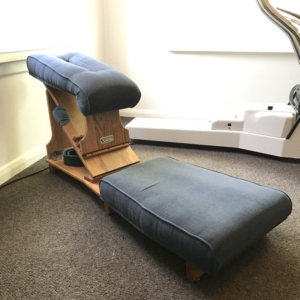
The Knee Chest Table
The knee-chest table was one of Gonstead’s uniquely emphasized tables, it can be used for the entire spine. The knee-chest table is also an excellent table to use for pregnant women, allowing for a comfortable position at any stage of pregnancy. It works specifically well for the late term pregnant patient, a patient with rib injuries such as fractures that cannot lay on a solid surface and for the more full figured patients that do not adjust well on the pelvic bench or hylo tables.
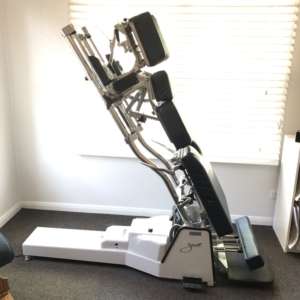
The Hylo Table
The Hylo table, with special modifications made specifically for Dr. Gonstead many years ago, has long been an integral part of the Gonstead equipment, and accommodates a wide variety of patients, including pregnant women. The hylo table is used to adjust the mid and lower back. Since the primary direction of misalignment of these vertebrae is posterior (backwards), this table provides a comfortable environment for subluxation reduction. Its motorized “up and down” function makes transition to the prone (face down) position much easier for all types of patients.


